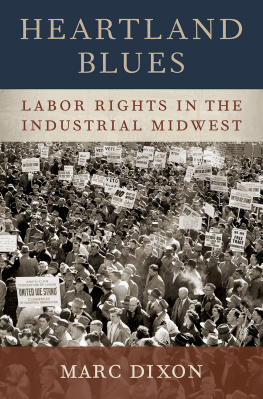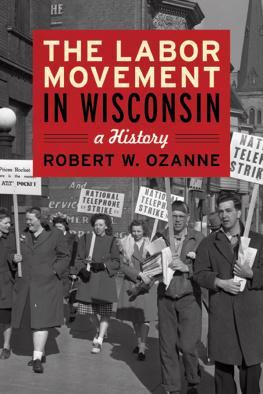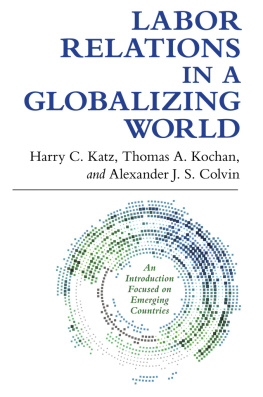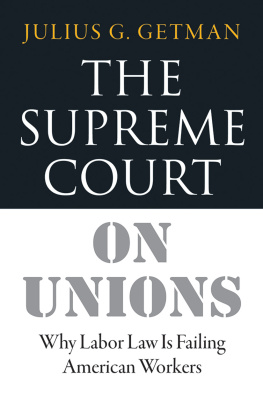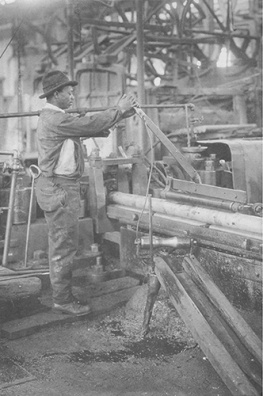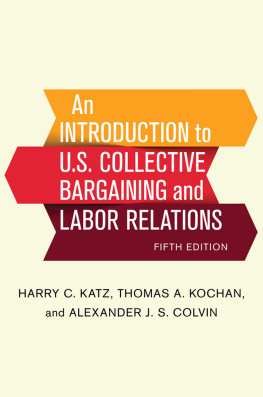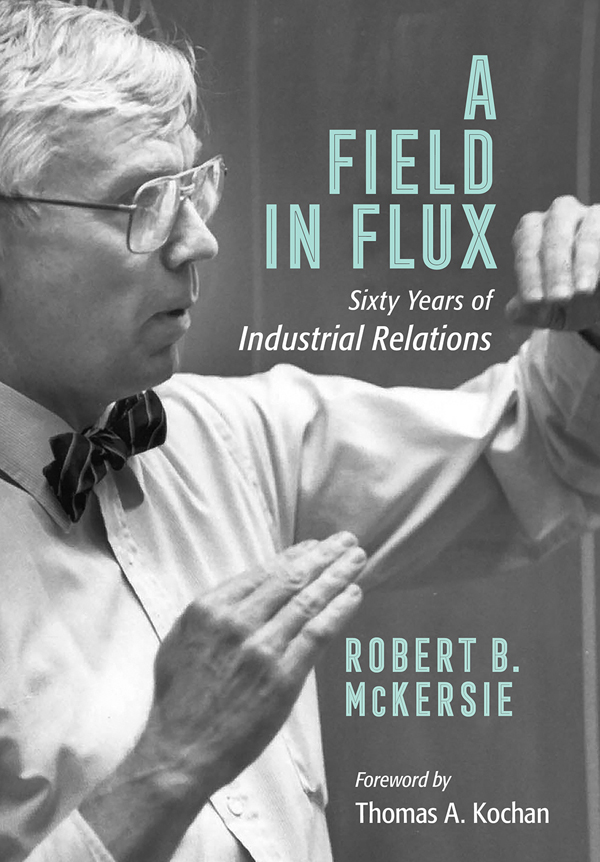ROBERT B. MCKERSIE
Foreword by Thomas A. Kochan
My wife and four children have been with me on this journey, and I dedicate this book to them
Journeying is an art. If we stop, we dont go forward
and we also miss the goal.
FOREWORD
The history and evolution of a field of inquiry can be written by reviewing key historical events or by highlighting the people who shaped those events. This book combines these two methods to produce a creative, engaging, and insightful commentary on the last sixty years of industrial relations. In fact, it goes even further, because the author is himself one of those people who has shaped the field, and because he is at the center of so much of the field of inquiry the history is also a personal journey.
A Field in Flux serves two important functions: it demonstrates how people have influenced past employment policies and practices when called to action in critical situations, and it seeks to instill confidence in those who will be called on to address the big challenges facing the future of work now and in the years to come.
We live in a very troubled time, one in which so many of the basic values and principles of industrial relations are being challenged and, in some cases, downright violated. The moral of the story covered in this book is that as we adapt to a changing world of work we must not forget about the value we place on efficiency, equity, and inclusive employment policies and practices. Norms that come through loud and clear in this book are worth carrying forward: showing respect for all who work, championing the cause for voice and worker representation in a democratic society, and engaging professionals both to learn from their experiences and to foster innovations. Nothing could be more energizing to those who will take this field of study and practice into the future.
This book could be written only by one remarkable individual, Robert B. McKersie. Bob chronicles the unique and personal journey through his career and, in doing so, provides a window into the life and work of one of the most important industrial relations scholars and leaders of our timeif not the most important. Ive been privileged to work with Bob for a good part of his sixty-year career, and I am pleased to offer a few words about how he has helped shape the events discussed in this book and our field of study.
In a piece commenting on Bobs lifetime achievement award from the International Conflict Management Association, Joel Cutcher-Gershenfeld and I described Bob as an integrative scholar. It was an obvious play on one of the central concepts in his 1965 book with Richard Walton, A Behavioral Theory of Labor Negotiations, about which you will learn more in the pages that follow. But it was also a statement about McKersie the friend, mentor, and colleague to the legions of people he has influenced over his career. As we wrote, Say hello to Bob McKersie for me. How many times have either of us heard someone at a professional meeting ask us to say this to Bob next time we see him? It is more than a perfunctory request. Bobs warmth and friendship and his impact on those he has interacted with over the last sixty years far surpasses the surface memories people have of each other, many of which fade over time. Not with Bob.
The McKersie most people know is one who always reads what students and colleagues send his way. No one ever comes back empty-handed. His suggestions are always preceded by encouraging comments. He takes a genuine interest in what those around him are doing and presses them to dig a bit deeper, to go back into the field to learn more about how things actually work. When the work is completed, he celebrates and promotes the author.
Bob has probably opened more doors to useful contacts for students and young scholars than anyone else in our profession. He did just that for me when I was an entry-level faculty member at Cornell University. I remember when he took me by the arm at a reception at a professional meeting. You have to meet my friend Jack Sheinkman, he said. He will be interested in what you are doing. It was the beginning of a lifelong friendship and partnership in several key efforts with Jack, who was president of the Amalgamated Clothing and Textile Workers Union. Just about everyone Bob knows has one or more stories like mine.
There is a side of Bob that only those who have seen him up close in action can fully appreciate. He is one of the most persistent advocates for fairness Ive ever met. He cant let an injustice go unaddressed. You will read in chapter 3 about his work on civil rights in Chicago during the 1960s and get a flavor of that part of his personality. How many junior faculty members today would have the gumption to get involved in what was then the most profound social movement of the day at such a level of intensity that the Reverend Jesse Jackson was compelled to do a video on Bobs work fifty years later? (For his remarks, see Jesse Jackson, Making Sense of the Senseless: Fifty Years after Selma and A Behavioral Theory of Labor Negotiations, Negotiation Journal 51, no. 4 (2015): 45960, https://onlinelibrary.wiley.com/doi/full/10.1111/nejo.12128.)
Another side of Bob is his modesty. Several of us who read early drafts of this book had to push him to overcome his reluctance to give himself credit for his own contributions to our field. The best example comes from our first reading of chapter 3, about his time at the University of Chicago. The early draft detailed the accomplishments of giants such as George Shultz and others, for page after page, followed by a single paragraph that essentially said (Im paraphrasing), Oh, by the way, Dick Walton and I wrote a book during those years.
Well, that bookThe Behavioral Theory of Labor Negotiationsbecame a fifty-year classic. Several of us who read that draft of this volumes chapter 3 had to insist that Bob expand on what was written to discuss the important role the book played and continues to play in the study, teaching, and practice of negotiations. And we went further, constituting a kind of kitchen cabinet to make sure Bob didnt get away with any more omissions of that sort.
Here, in their own brief words, are why these colleagues were eager to do so. Fred K. Foulkes, professor of organizational behavior and director of the Human Resource Policy Institute at Boston University, comments, Bob excels in giving back. His great questions and wise perspectives always make a difference, whether it is with respect to a labor-management matter or a personal career issue. David B. Lipsky, Anne Evans Estabrook Professor of Dispute Resolution at Cornell Universitys ILR School, notes that Bobs illustrious career coincides with many of the most significant changes that have occurred in the field of industrial relations. While his characteristic humility keeps him from taking credit, he exercised leadership through many of these changesand also transformed the ILR School at Cornell, as dean, into one of the nations foremost research centers on labor and employment relations. Mary Rowe, an adjunct professor in work and organization studies at the MIT Sloan School of Management comments, The precepts of negotiation theory that Bob helped develop are simple, elegant, and of extraordinary power in helping to understand all interactions of two or more points of view. They are taught around the world and are on track to endure, quite possibly, forever. I use them as an ombudsperson, as a family member, in consulting, in seeking to understand world eventsand even, wryly, in negotiating with myself when I have two or more points of view about something. And Joel Cutcher-Gershenfeld, a professor at the Heller School for Social Policy and Management at Brandeis University notes that Bob McKersies career has not only tracked but also shaped the evolution of industrial relations. He has helped me appreciate, among other things, the centrality of the internal bargaining needed for lateral alignment, the integrative potential in what others may view as intransient conflicts, and the importance of tackling big issues.


